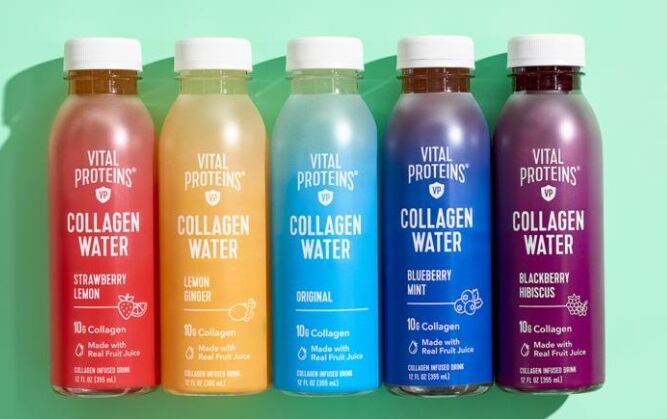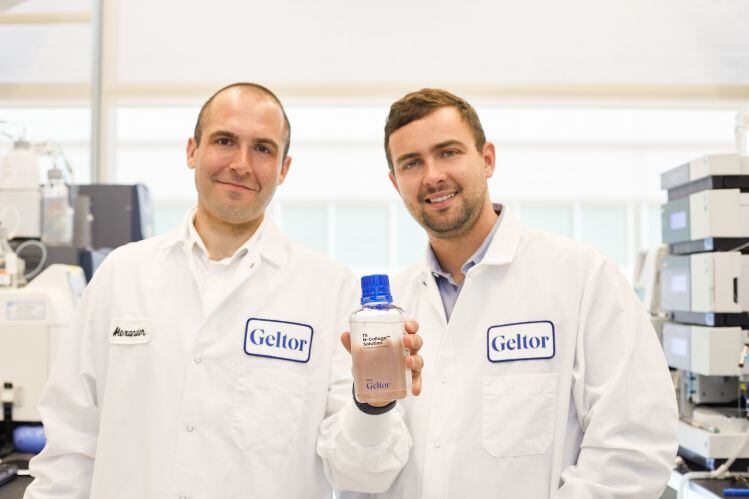“In 2017, we launched into Whole Foods and instantly became one of the top brands in their whole body section,” because Vital Proteins had done its homework first as a DTC brand, Kurt Seidensticker told attendees at BevNet Live in New York City last week.
He explained that a pivotal part of this strategy was investing about 15% to 20% of its revenue in marketing and networking with influencers “from day one” to build up a loyal fan base.
“Our company is based on influencer marketing ... networking and developing real, solid relationships,” Seidensticker said. For example, he noted that the “very first person I met at the very first trade show I did, and I spent two hours talking to, was Melissa Hartwig, who is the founder of Whole30. I told her my story, I said here is what I think collagen is, here are the benefits and she listened and then she was out there advocating for the brand – unpaid and unsolicited,” and that brought tremendous benefit the company without a tremendous marketing spend.
Based on that experience as well as seeing the benefit of other unpaid and unsolicited endorsements from high profile celebrities, Seidensticker said he decided to skip hiring a sales team and instead hire an influencer team.
“We call them influencer relationship managers, and those managers foster these relationships,” which creates demand with consumers asking retailers for the product so that eventually retailers reached out to Vital Proteins rather than the other way around, Seidensticker said.
Micro-influencers are a better bet expensive influencers with broader reach
One way strategy employed by Vital Proteins’ influencer relationship mangers was to focus on micro digital influencers who have 2,000 to 5,000 followers on Instagram, Seidensticker said. He explained that micro-influencers, in many ways, have more sway over consumers than influencers with 3 to 4 million followers, because they have higher engagement rates of 25% to 40%, which means their say-so translates into real sales.
One way that Vital Proteins leverages these influencers is to host them at off-site events where they can create real content on their feeds and in their Instagram Live Stories.
“When we launched our collagen water at Expo West we threw an influencer event party. Those influencers were talking about it on social media, but also doing swipe up campaigns on their Instagram stores that then lead traffic directly to our website,” Seidensticker said.
Initially, all of Vital Proteins’ influencers were unpaid, but as influencer marketing emerged as career path, Seidensticker said some reps began asking for money. Rather than compromise the authenticity and value of its existing influencers’ recommendations, Vital Proteins created an affiliate marketing program that allowed those who wanted to be paid to earn money through sales.
Collect as much consumer data as possible
Vital Proteins didn’t leave all the power in the hands of influencers, though. Rather, Seidensticker said, the company gathered data from consumers who discovered the brand through influencers and created a retargeting campaigns that displayed ads for the brand across consumers’ other social media channels and the websites they visited online.
Similarly, Vital Proteins collects the emails of consumers who receive free products at field marketing events and then uses that to create email campaigns. The result was a 65% lift on the company’s list and about a 327% year-over-year increase in sales, Seidensticker said.
The company then used this data to discover who its primary consumer is and how they used the product. From there it created new high-demand products. For example, Seidensticker said, an email survey of consumers revealed that many people were using the brand’s collagen in the morning and adding it to their coffee. This inspired the company to create a better tasting and higher functioning collagen-based coffee creamer.
Partnering with Amazon
Vital Proteins did not rely solely on influencers to drive brand awareness and sales, it also teamed with Amazon, which Seidensticker noted is “really hard to outperform” and “is an outstanding platform for growing a brand and selling a brand.”
That said, he recommended that companies use Amazon’s fulfillment capabilities but sell directly on Amazon’s marketplace rather than letting third parties market the product. Again, this allows the company to capture consumer data, but also it assures quality control.
Vital Proteins also leveraged more than just Amazon’s marketplace, it used the behemoth to help it generate brand awareness by marketing across Amazon’s other platforms, including its video streaming.
This in turn allowed Vital Proteins to collect even more data about its consumers when they were logged onto Amazon to better personalize future communications, Seidensticker said.
Ultimately, Seidensticker said, building a business is about meeting consumers’ needs, and to do that the company needs a direct line of communication with shoppers, which can take many forms but always serves the same function.



